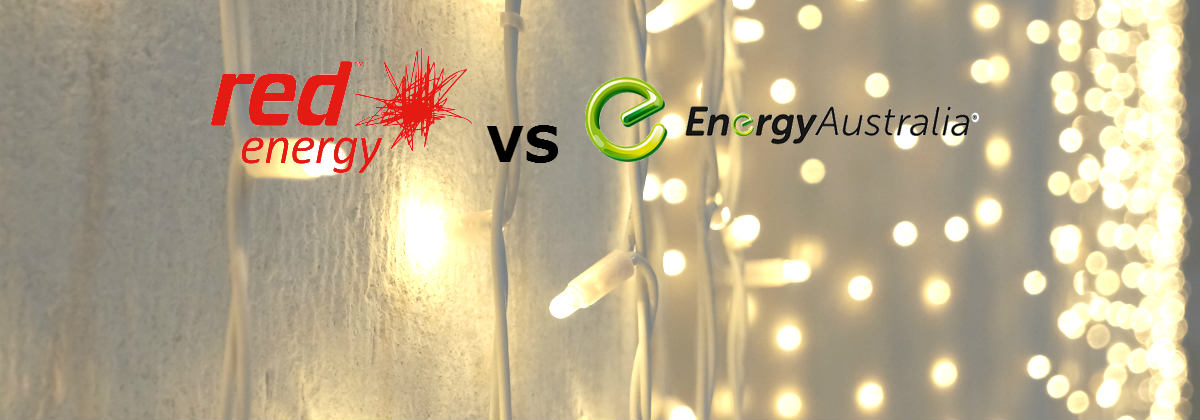In this Canstar Blue report, we review the electricity offers of Red Energy and EnergyAustralia across the states they serve, and show how much their plans are likely to cost you.
While AGL and Origin dominate much of the Australian energy market, Red Energy and EnergyAustralia are two of their biggest challengers, particularly in New South Wales and Victoria. With a healthy mix of fixed rate plans and rewarding offers available, they present a viable alternative to the two big power companies. So, how do they compare and who works out cheapest where you live?
Be sure to read the specific details in your state before making a purchase decision because details and prices may vary significantly.
On this page:
Compare energy plans
It is always a good idea to keep informed on other electricity providers and the current deals on the market.
Here are some sponsored deals from the retailers on our database that include a link to the retailer’s website for further details. These are products from referral partners†. These costs are based on the Ausgrid energy network in Sydney but prices may vary depending on your circumstances. This comparison assumes general energy usage of 3900kWh/year for a residential customer on a single rate tariff. Please use our comparison tool for a specific comparison in your area and to see other products in our database that may be available. Our database may not cover all deals in your area. As always, check all details of any plan directly with the retailer before making a purchase decision.
|
9% Less than reference price |
$1,651 Price/year (estimated) |
Go to Site |
Here are some sponsored deals from the retailers on our database that include a link to the retailer’s website for further details. These are products from referral partners†. These costs are based on the Citipower network in Melbourne but prices may vary depending on your circumstances. This comparison assumes general energy usage of 4000kWh/year for a residential customer on a single rate tariff. Please use our comparison tool for a specific comparison in your area and to see other products in our database that may be available. Our database may not cover all deals in your area. As always, check all details of any plan directly with the retailer before making a purchase decision.
 |
|
15% Less than VDO |
$1,238 Price/year (estimated) |
Go to Site |
Here are some sponsored deals from the retailers on our database that include a link to the retailer’s website for further details. These are products from our referral partners†. These costs are based on the Energex network in Brisbane but prices may vary depending on your circumstances. This comparison assumes general energy usage of 4600kWh/year for a residential customer on a single rate tariff. Please use our comparison tool for a specific comparison in your area and to see other products in our database that may be available. Our database may not cover all deals in your area. As always, check all details of any plan directly with the retailer before making a purchase decision.
 |
|
9% Less than reference price |
$1,888 Price/year (estimated) |
Go to Site |
Here are some sponsored deals from the retailers on our database that include a link to the retailer’s website for further details. These are products from our referral partners†. These costs are based on the SA Power network in Adelaide but prices may vary depending on your circumstances. This comparison assumes general energy usage of 4011kWh/year for a residential customer on a single rate tariff. Please use our comparison tool for a specific comparison in your area and to see other products in our database that may be available. Our database may not cover all deals in your area. As always, check all details of any plan directly with the retailer before making a purchase decision.
 |
|
9% Less than reference price |
$2,036 Price/year (estimated) |
Go to Site |
Red Energy vs EnergyAustralia – cheapest deals
We’ve listed the current cheapest published deals on our database for EnergyAustralia and Red Energy across Victoria, New South Wales, South Australia and south-east Queensland, with any notable features detailed accordingly.
Which deal is cheapest in NSW: Red Energy or EnergyAustralia?
In NSW, Red Energy snags the crown for cheapest price. You can see how these two providers compare with other energy companies in the Sydney area with our NSW cost comparison report.
Here are the Red Energy and EnergyAustralia plans on our database for NSW. This table contains some products from a referral partner†. These costs are based on the Ausgrid network in Sydney but prices may vary depending on your circumstances. This comparison assumes general energy usage of 3900kWh/year for a residential customer on a single rate tariff. Please use our comparison tool for a specific comparison in your area. Our database may not cover all deals in your area. As always, check all details of any plan directly with the retailer before making a purchase decision.
Which deal is cheapest in VIC: Red Energy or EnergyAustralia?
In this case, Red Energy edges out EnergyAustralia’s cheapest offer in terms of price, however you may find greater value in other features of a plan, like customer service and rewards programs. See our Victorian electricity price report to see how EnergyAustralia and Red Energy compare to other retailers in the state.
Here are the Red Energy and EnergyAustralia plans on our database for Victoria. This table contains some products from a referral partner†. These costs are based on the Citipower network in Melbourne but prices may vary depending on your circumstances. This comparison assumes general energy usage of 4000kWh/year for a residential customer on a single rate tariff. Please use our comparison tool for a specific comparison in your area. Our database may not cover all deals in your area. As always, check all details of any plan directly with the retailer before making a purchase decision.
Which deal is cheapest in QLD: Red Energy or EnergyAustralia?
Red Energy is currently cheaper than EnergyAustralia in Queensland. Perhaps more value could be found in rewards programs or value incentives? To see how these two retailers compare to others in the state, check out our QLD electricity cost comparison report.
Here are the Red Energy and EnergyAustralia plans on our database for SEQ. This table contains some products from a referral partner†. These costs are based on the Energex network in Brisbane but prices may vary depending on your circumstances. This comparison assumes general energy usage of 4600kWh/year for a residential customer on a single rate tariff. Please use our comparison tool for a specific comparison in your area. Our database may not cover all deals in your area. As always, check all details of any plan directly with the retailer before making a purchase decision.
Which deal is cheapest in SA: Red Energy or EnergyAustralia?
EnergyAustralia is the cheaper of the two retailers compared here. Find out how these two energy providers compare to others in SA with our cost comparison report.
Here are the Red Energy and EnergyAustralia plans on our database for South Australia. This table contains some products from a referral partner†. These costs are based on the SA Power network in Adelaide but prices may vary depending on your circumstances. This comparison assumes general energy usage of 4000kWh/year for a residential customer on a single rate tariff. Please use our comparison tool for a specific comparison in your area. Our database may not cover all deals in your area. As always, check all details of any plan directly with the retailer before making a purchase decision.
What plans do EnergyAustralia and Red Energy offer?
EnergyAustralia and Red Energy both offer multiple plans to residents with varying rates and discounts depending on your electricity distributor. EnergyAustralia generally has three to four market offers for customers, some of which come with a guaranteed discount. Red Energy also generally has three to four market offers in each state it serves, most of which offer variable rates and value-add incentives.
EnergyAustralia plans
- Flexi Plan: This plan carries a guaranteed discount, and advertises low, variable rates for a 12 month benefit period. This plan also has no exit fees or lock-in contracts.
- Balance Plan Home: This plan offers variable rates over a 12-month benefit period. It has no exit fees.
- Rate Fix Plan: This plan locks in your usage and supply rates for 12 months.
Red Energy plans
- Living Energy Saver: This plan comes with variable rates on a no lock-in contract.
- Qantas Red Saver: This plan is similar to the Living Energy Saver with its variable rates, but also offers a lump sum of Qantas Points for signing up. Plus, you’ll earn more points just for paying bills on time.
- BCNA Saver: Customers on this plan agree to Red Energy donating $5 a month to Breast Cancer Network Australia on their behalf.
- Red Taronga Flex: This plan includes a 12-month membership to Taronga Zoo for one adult and kids under 16. Red Taronga Flex is only available to customers in NSW.
- Red Wildlife Saver: Red Energy will contribute $5 to the Taronga Conservation Society each month you remain on this plan.
- Red EV Saver: The usage charges for this plan are waived between 12-2PM Saturday and Sunday (excluding Green Power and Service to Property charges). The plan also has a renewable matching promise, where Snowy Hydro Limited will match every unit of electricity with one sourced from renewable energy.
You may also be interested in:
Should I sign up to EnergyAustralia or Red Energy?
Like all energy providers, Red Energy and EnergyAustralia are desperate for your custom. But to find out if you’re really getting a good deal, we suggest drilling down further into their respective electricity price fact sheets for specific information about usage and supply charges. It’s also worth checking how they are rated by customers in your state, which you can do via the link below.
If you have been with your existing energy provider for two years or more, you are very likely paying more than you need to. To get the best deals on electricity, you need to be willing to switch providers every year or two, taking advantage of new highly discounted offers. The retailers want new customers and this is how they attract them. These will give you the maximum savings, but it will require a little work on your part.



Share this article